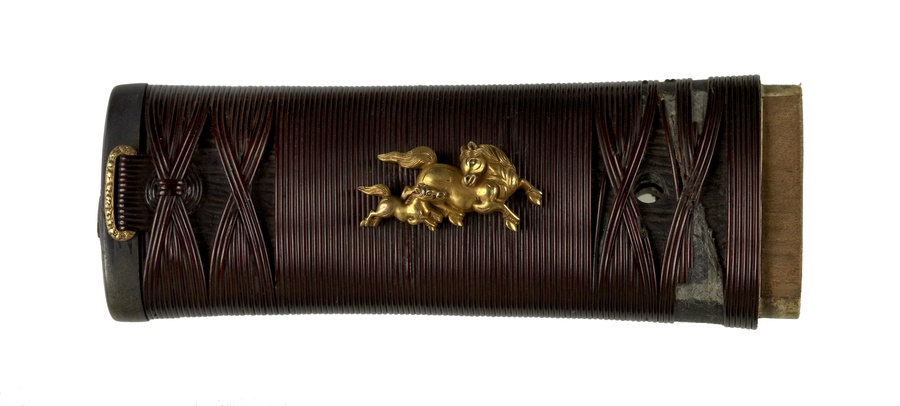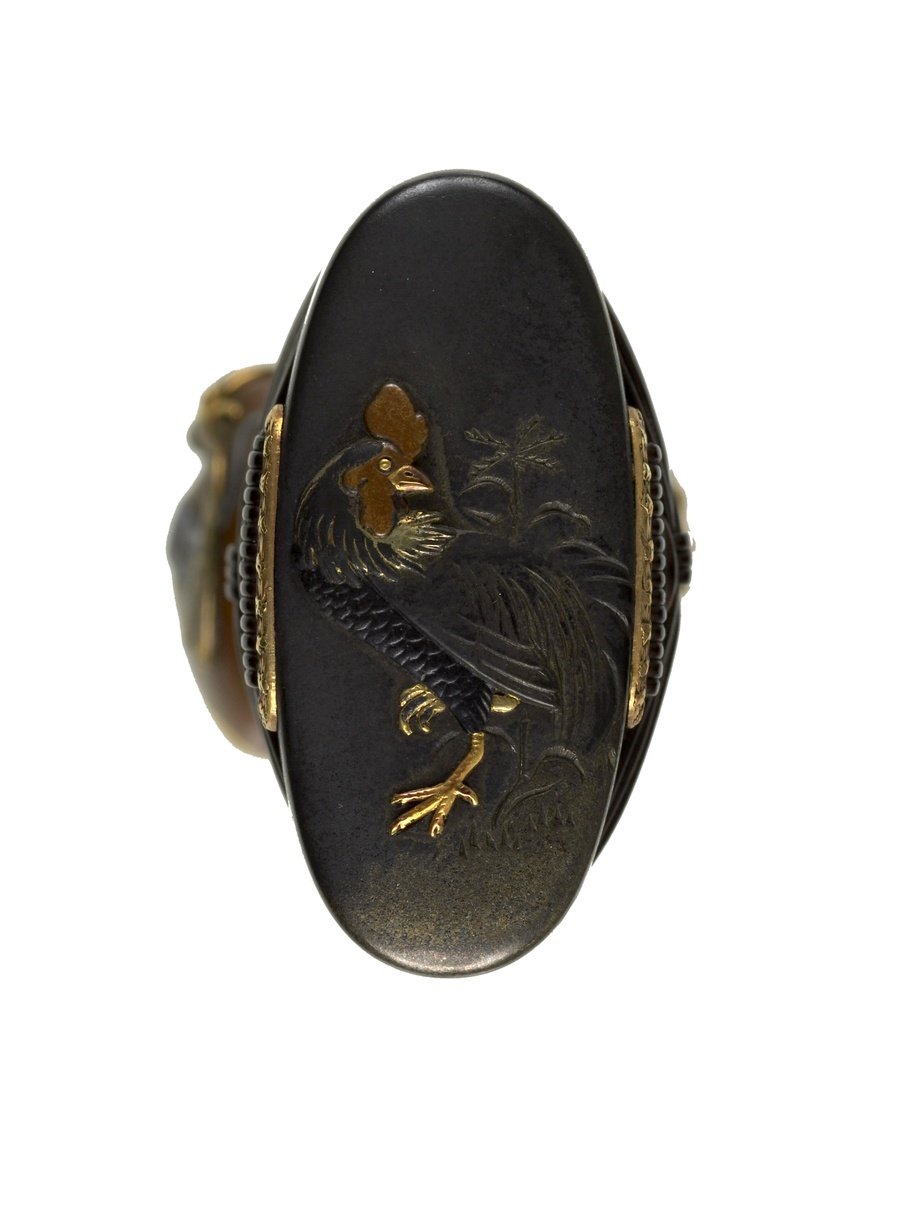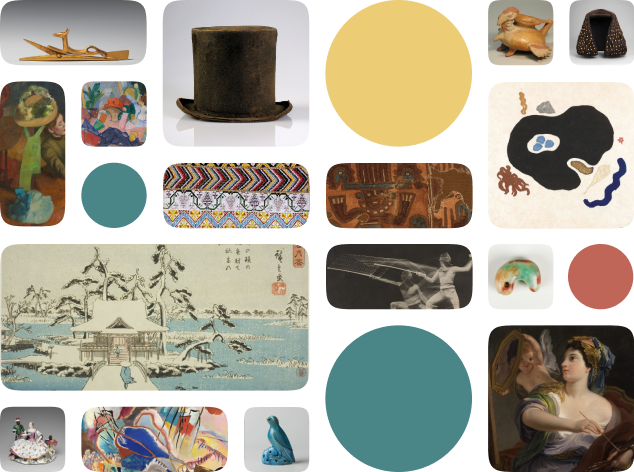About the work
This tsuka (hilt) demonstrates how menuki would have been used to cover mekugi, or nail holes, on a sword hilt. This 19th century hilt is made of enamel, with silver and gold accents. The menuki would have helped secure the user’s grip. When a samurai or other elite commissioned a sword, a master swordsmith would have made the sword’s blade, while other craftsmen fashioned the tsuka and fittings, like tsuba and menuki. These menuki feature an adult horse and a foal galloping on the front of the hilt. Samurai rode horses into battle, and horses symbolized refinement and power in Japanese art. On the reverse side, the menuki takes the form of a gourd. This feature is perhaps a visual pun of the Japanese idiom “like a horse coming out of a gourd,” which describes something unexpected.
Walters Art Museum Object Description
The menuki are in the shape of two horses and a gourd. This may be an illustration of the idiom "like a horse coming out of a gourd," which is used to describe unexpected things. The saying may have developed from stories of the Chinese immortal Chokaro (Ch. Zhang Guo [Chang Kuo]) who carried his magical mule in a gourd. A rooster is on the kashira. This is part of a mounted set.
Work details
"--" = no data available
All Works in Curationist’s archives can be reproduced and used freely. How to attribute this Work:
.




